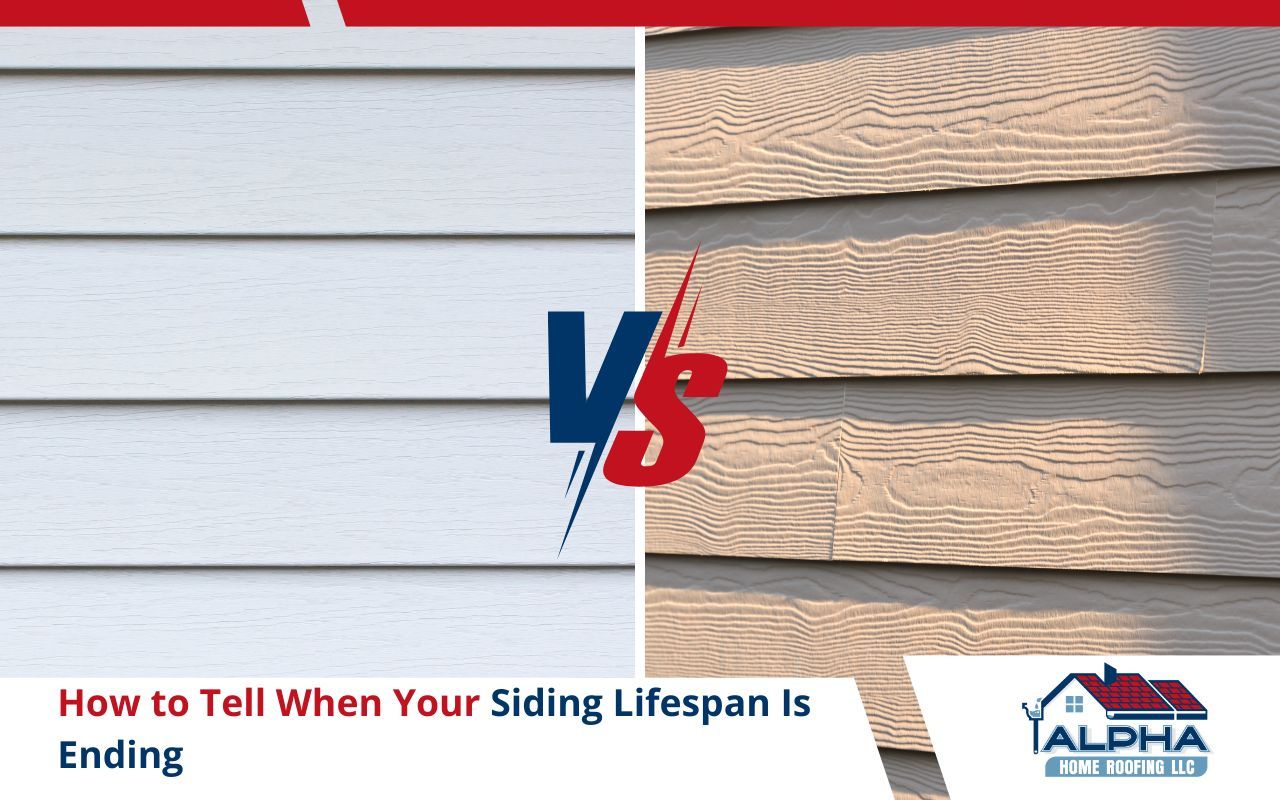
Siding is one of the most important features of your home’s exterior—it protects your structure from the elements, improves insulation, and enhances curb appeal. But even durable materials wear down over time. If you’re unsure how long yours should last, it’s helpful to understand the average siding lifespan and the warning signs that it may be time to replace it.
At Alpha Home Roofing LLC, we’ve helped countless homeowners throughout Elizabeth, Edison, Scotch Plains, and New Providence, NJ determine whether it’s time for siding replacement. In this guide, we’ll explain how long siding typically lasts, what affects its durability, and how to spot early damage before it becomes a bigger issue.
How Long Does Siding Really Last?
The lifespan of siding depends on the material and how well it’s maintained. Vinyl siding typically lasts between 20 to 30 years. Fiber cement can last up to 50 years, while wood siding may need replacement or repainting more frequently due to moisture and pest exposure. Even though some materials promise decades of use, exposure to extreme weather, poor installation, or lack of upkeep can shorten that lifespan significantly.
If your siding is nearing the 20-year mark—or if you’re seeing visible damage—it may be time to start thinking about a replacement. Alpha Home Roofing LLC offers siding inspections and replacement services for homes throughout the region. You can explore more about our siding installation options here.
Spotting the Signs You Need New Siding Installation
Homeowners often ask us how to know when siding has truly reached the end of its lifespan. While age is one factor, physical signs usually provide the clearest answer. If you notice fading, cracking, warping, or loose panels, your siding likely isn’t doing its job anymore. In more serious cases, interior signs such as peeling paint, moisture stains, or drafty walls suggest that your siding is no longer protecting your home from the outside in.
Beyond appearance, rising utility bills can also point to aging or damaged siding. Once insulation breaks down, your home becomes harder to heat or cool efficiently. That’s why replacing your siding when you first see these symptoms is often more cost-effective than waiting. You can explore other ways to enhance your home’s exterior and insulation on our services page.
What Affects the Lifespan of Your Siding?
Several factors can impact how long your siding will last. Installation quality plays a big role—if your siding wasn’t installed properly, it might allow moisture to seep in or panels to come loose earlier than expected. Climate is another key factor. In New Jersey, the seasonal shifts between heat, humidity, snow, and wind can accelerate wear, especially if your home isn’t protected by overhangs or proper drainage.
Maintenance is also essential. Power washing, sealing, or repainting when needed helps extend the life of many siding types. Ignoring small issues, like tiny cracks or gaps, can lead to bigger problems later on. That’s why it’s always a good idea to schedule an inspection when in doubt. If your siding is showing signs of stress, we’re happy to take a look. Contact our team today for a free consultation.
Frequently Asked Questions
How do I know when siding has reached the end of its lifespan?
Look for visual damage such as cracks, fading, warping, or mold. If your siding is over 20 years old and showing signs of wear, it’s likely time for replacement.
Can I extend the life of my siding?
Yes. Regular maintenance, proper cleaning, and fast repairs of minor issues can help siding last longer and maintain its protective qualities.
What’s the most durable siding option?
Fiber cement and high-quality vinyl tend to last the longest with minimal upkeep. We’ll help you choose the best material for your budget and climate.
Ready to Replace Aging Siding?
When your siding nears the end of its lifespan, it’s better to act early than wait for bigger problems. At Alpha Home Roofing LLC, we help homeowners in Elizabeth, Edison, Scotch Plains, and New Providence, NJ choose the right replacement options to protect and update their homes.
